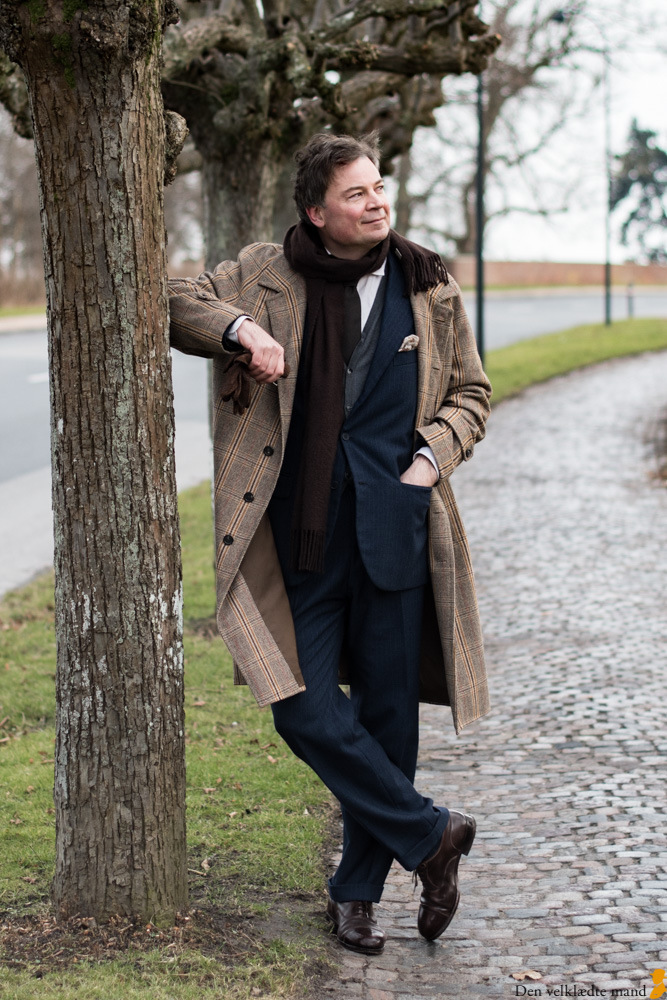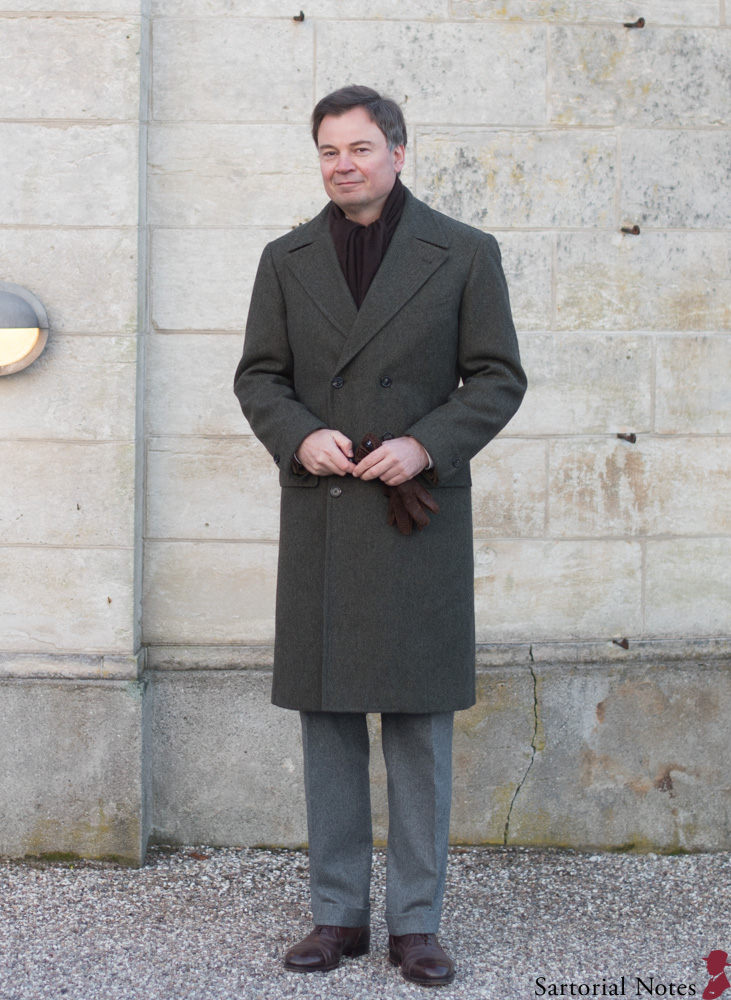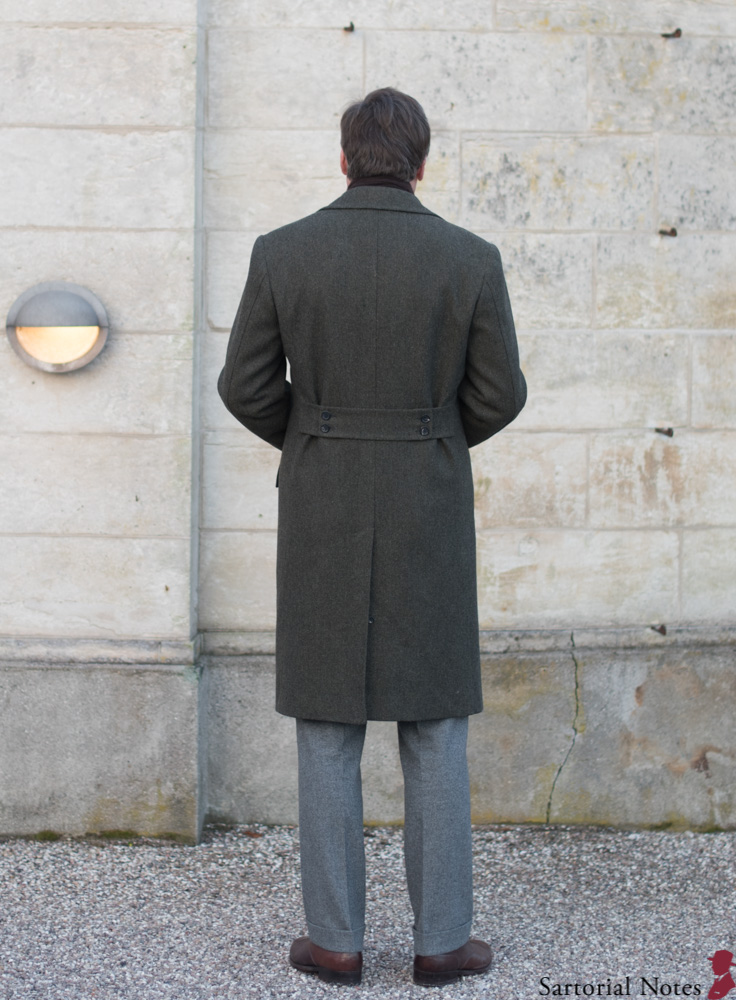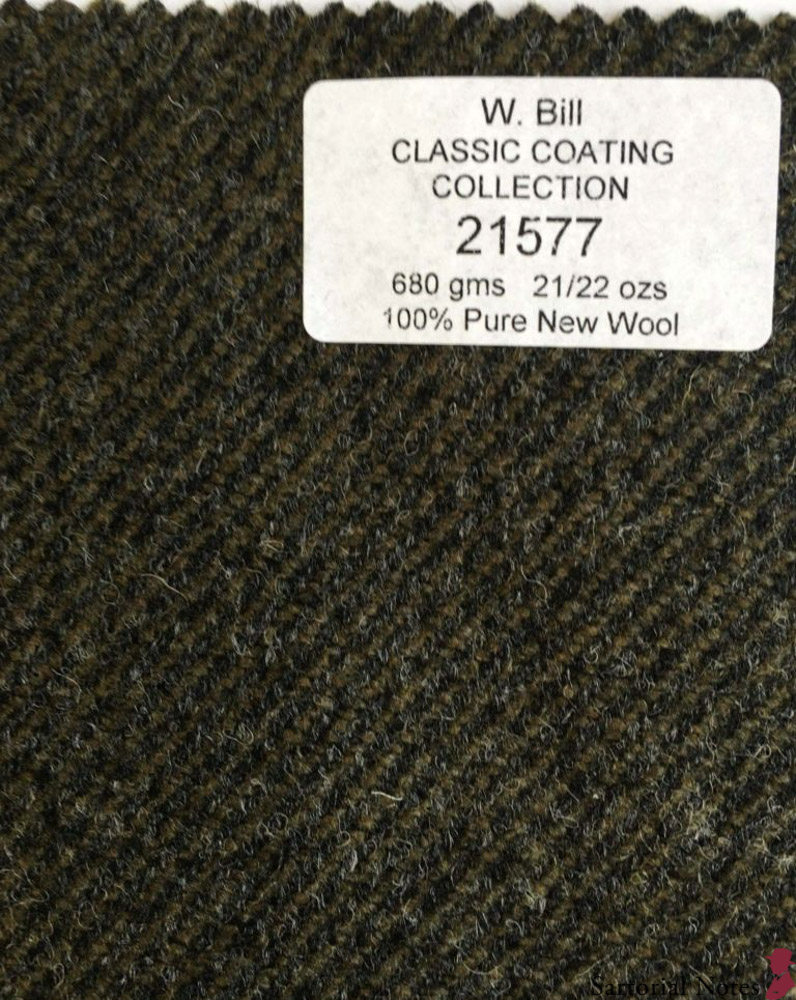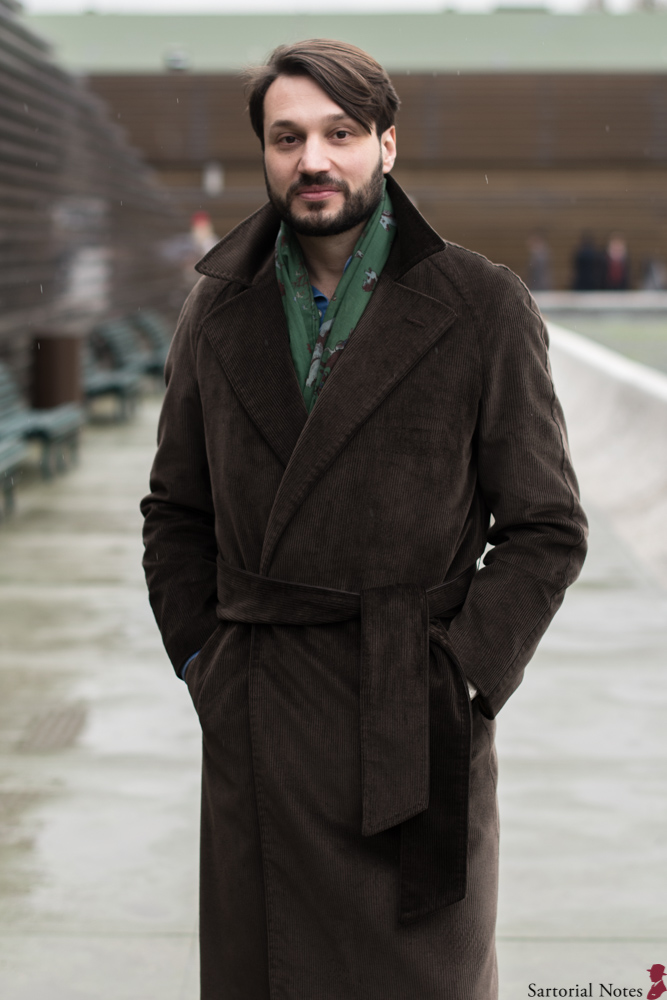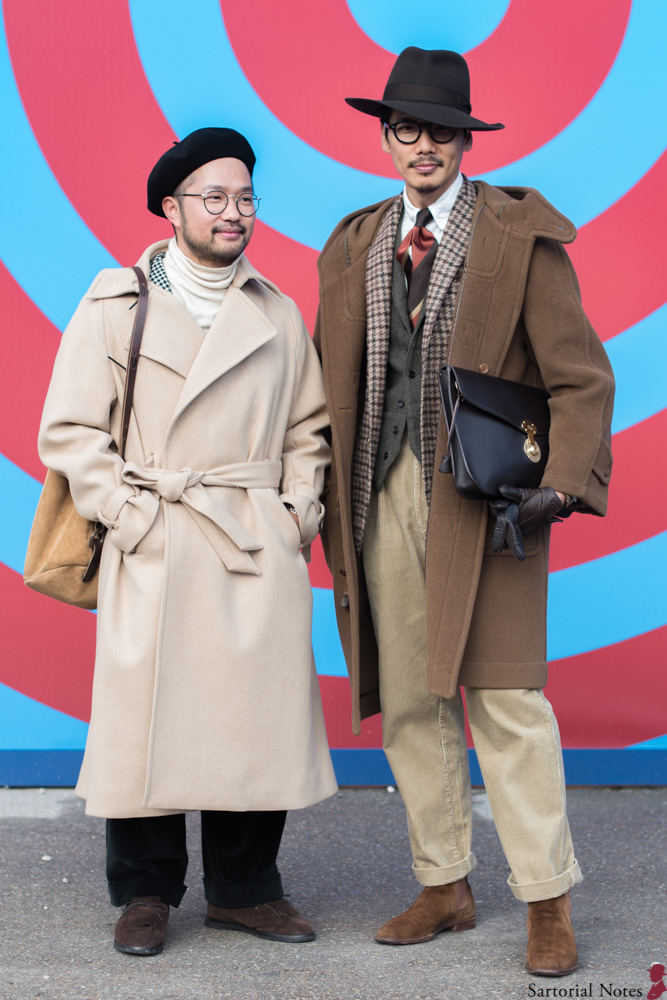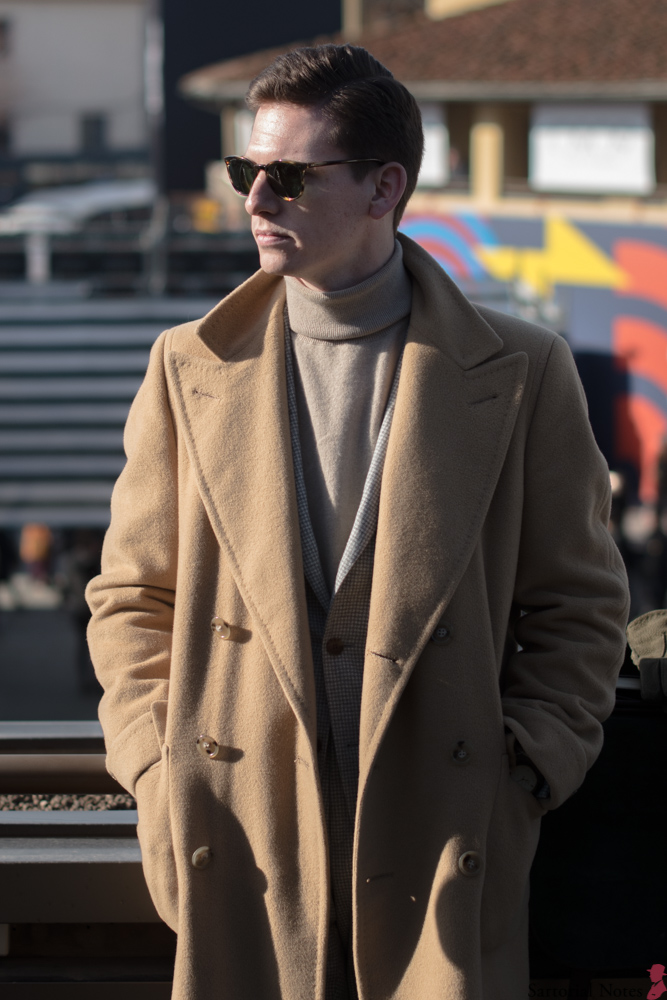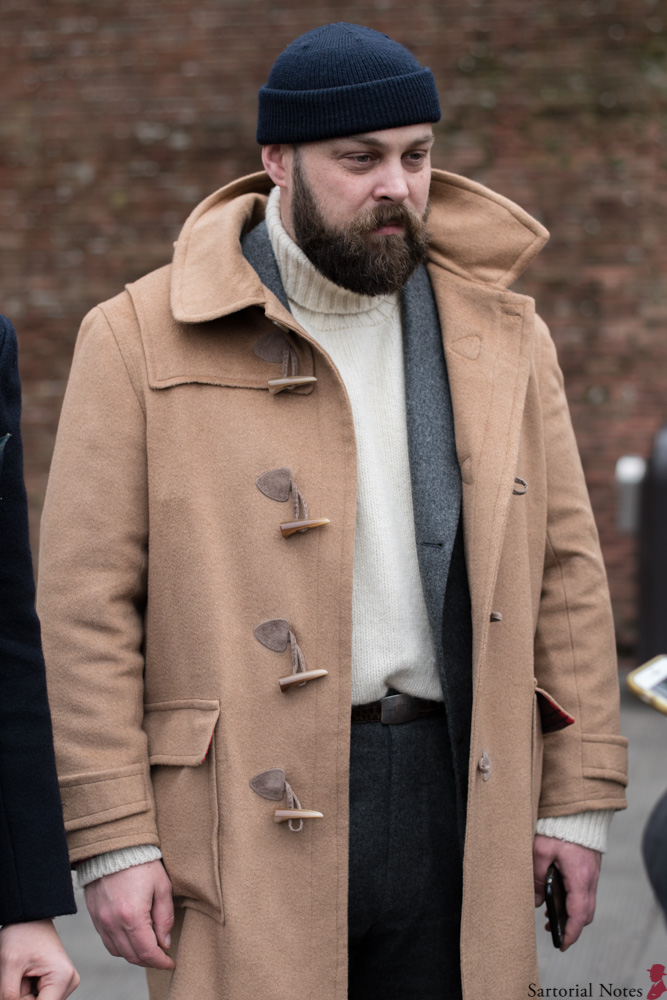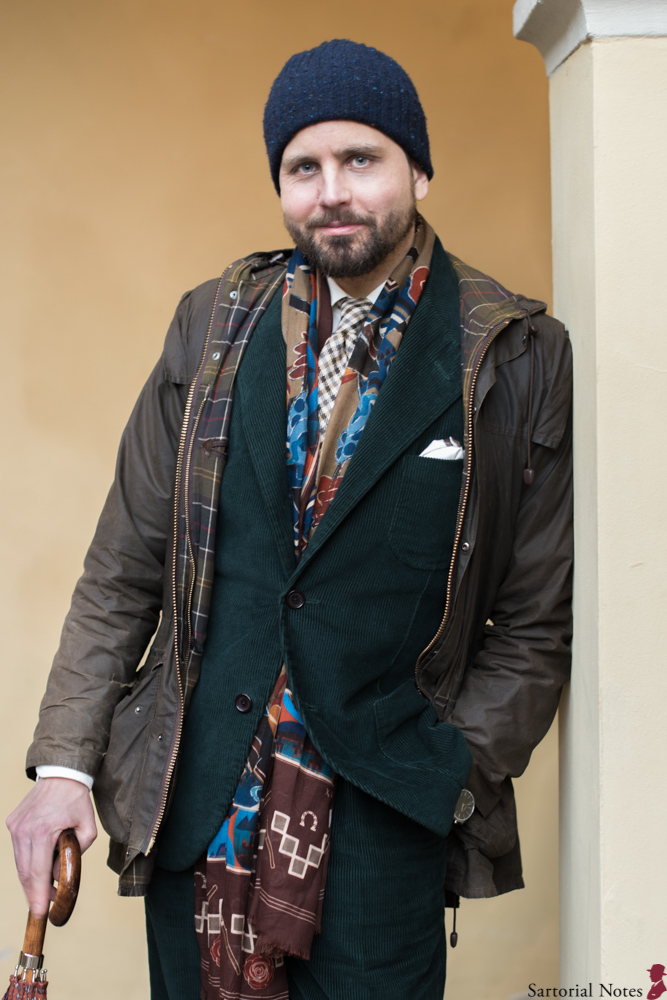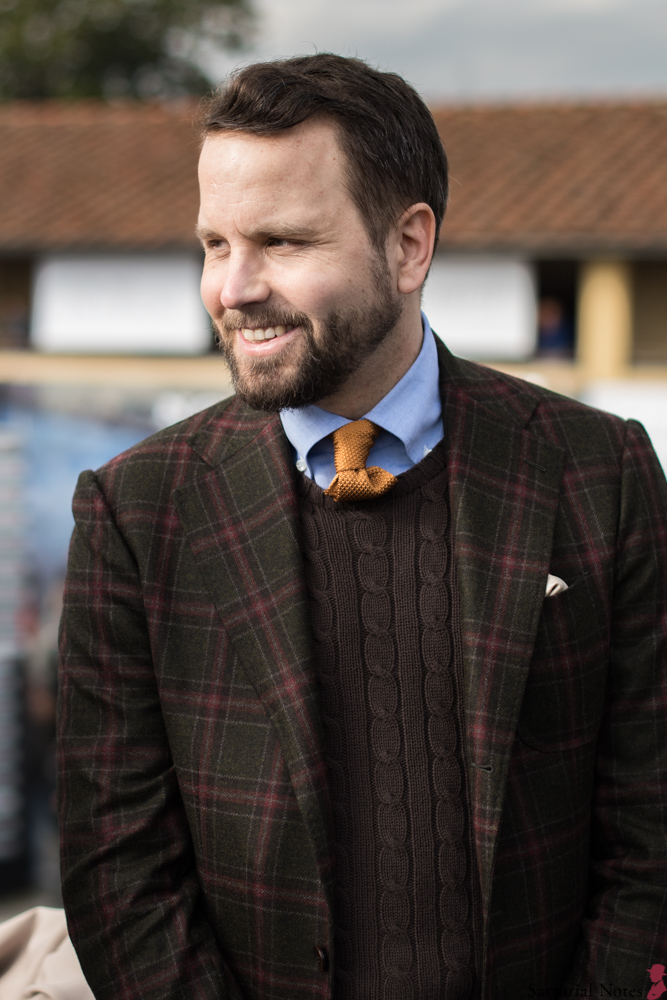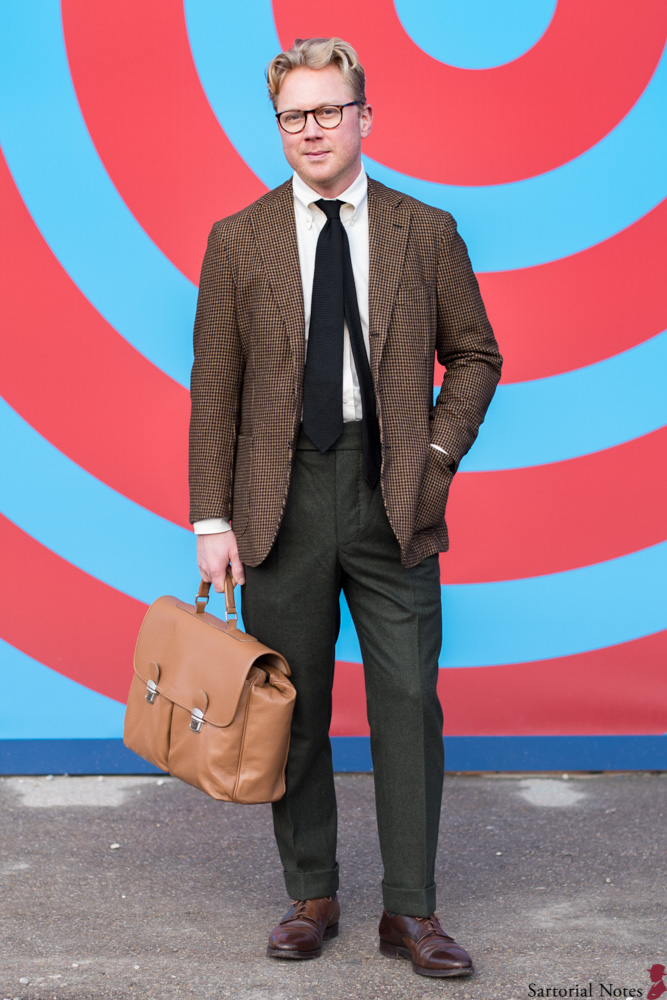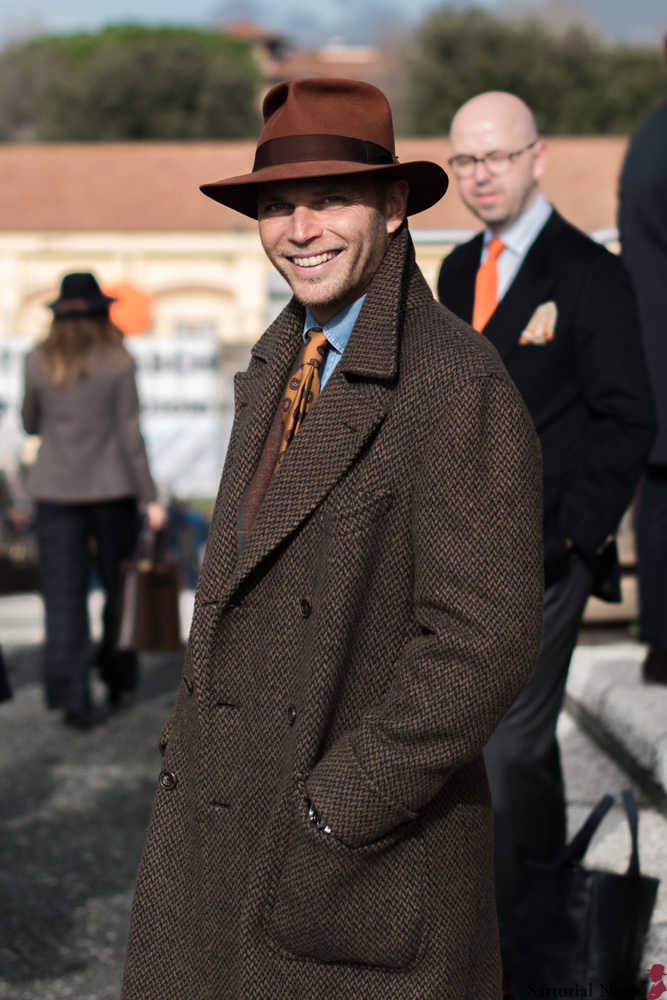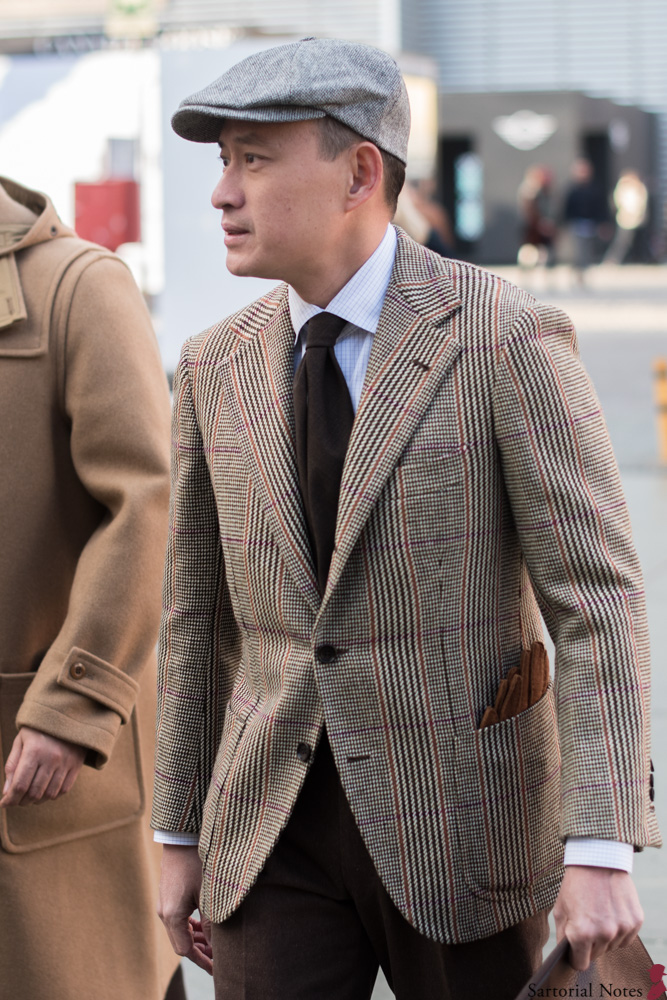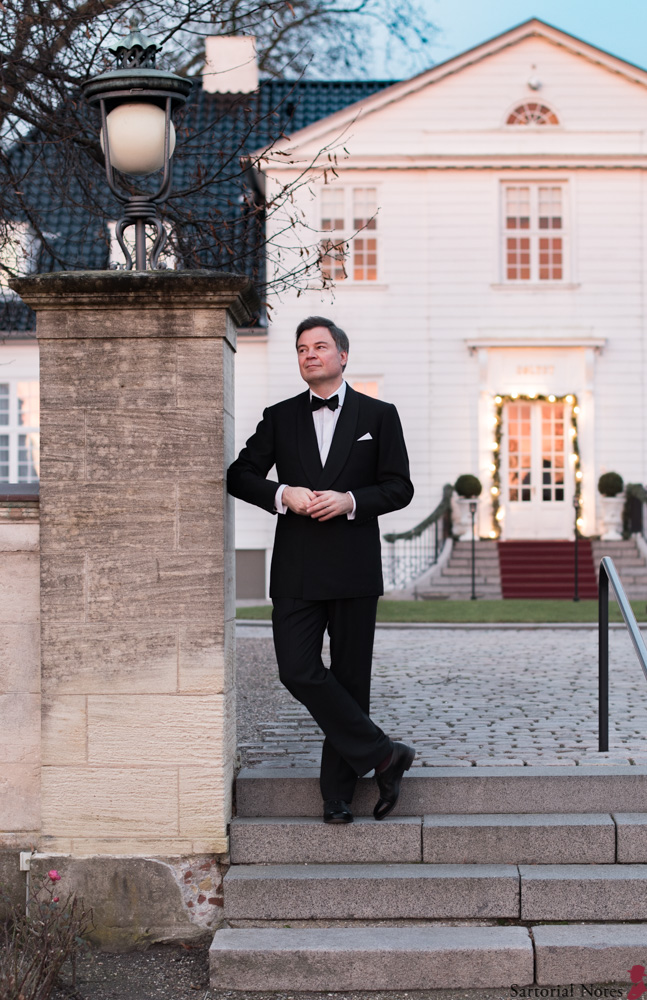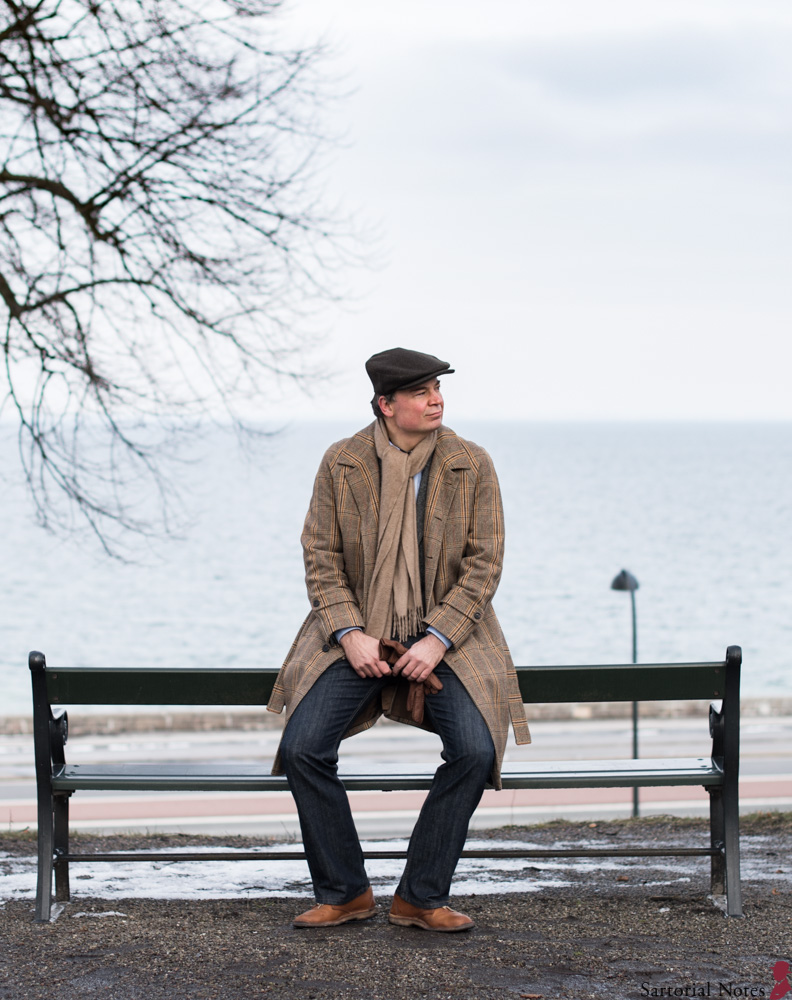
Weekend style is not a polished look to me. Bespoke raglan overcoat, bespoke greyish Harris Tweed jacket underneath, cashmere scarf, blue jeans, and duckfeet shoes.
A couple of photos from recent weeks. As you can see I’m not good a very a very polished look, perhaps because I feel that I’m not perfect enough for that. Still, I need a haircut, I admit that.

Bespoke overcoat (Guida) and bespoke suit (Vestrucci), silk scarf, bespoke adelaide shoes (Kielman).
Photography: Sartorial Notes

